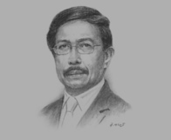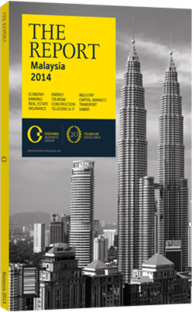OBG talks to Mohd Yaakub Johari, President and Chief Executive, Sabah Economic Development and Investment Authority (SEDIA)

Interview: Mohd Yaakub Johari
What are the goals for Phase II of the Sabah Development Corridor (SDC)?
MOHD YAAKUB JOHARI: Phase I of the SDC was dedicated to decreasing poverty and improving infrastructure to support economic activity. To this end, we developed container facilities; roads; buildings for livestock, dairy farming and other agro-industries; and training facilities. Many successful projects have come out of these goals, including the Palm Oil Industrial Cluster (POIC), the Sipitang Oil & Gas Industrial Park (SOGIP), the Sabah Agro-Industrial Precinct in Kimanis, the Keningau Integrated Livestock Centre and the Kinabalu Gold Coast Enclave.
For Phase II (2011-15) we have set out to attract investors, improve human capital and build the foundations for knowledge-intensive industry, so that the private sector can launch from a solid base. Phase III will focus on enhancing connectivity and logistics facilities to attract investment, including the improvement of broadband internet access and international air connections. Developing human capital is a process that goes hand-in-hand with enhancing ICT, biotech and other knowledge-intensive industry. Sabah may not be a manufacturing powerhouse, but it can still compete by focusing on the higher end of industry.
What are the challenges in promoting sustainable development while furthering economic activity?
YAAKUB: So far there has been no issue in promoting sustainable development because people want to protect the environment, but we need to ensure that this sentiment is preserved while Sabah increases its economic activities. Our neighbours have their own advantages, but Sabah has the highest mountain in South East Asia and rich marine life, in addition to the oldest rain forest in the world. Sustainability is therefore important in everything we do. One inspiring model is that of the San Diego Safari Park, a jungle in the Californian desert with well-designed logistics for visitors and appropriate protection for the local wildlife. Sabah already has a jungle teeming with life, and all we need to do is protect what we have by involving the private sector in an organised manner. While people might otherwise complain about paying to enter a nature park, I believe they have no problem paying a “conservation fee” to protect the environment.
Are businesses familiar with the incentives provided by the government?
YAAKUB: It is important to recognise that we cannot compete in everything, which is why SEDIA maintains a focus on key sectors, especially agriculture, oil and gas, education and tourism. Investments in the promoted sectors in the designated locations are eligible for SDC incentives. Our approach is to keep talking to the business community so that it is aware of the available incentives. Big companies or business groups are sophisticated enough to take advantage of fiscal incentives, but small and medium-sized enterprises do not have the resources to do this, which is why we organise free courses to help develop business plans and familiarise them with the available incentives and facilities.
How can Sabah best compete internationally for foreign direct investment (FDI)?
YAAKUB: The main attraction for investors is the various clusters we have established, such as SOGIP, POIC, and the Kinabalu Gold Coast, which are aligned with the state’s endowments. The goal of these clusters is to concentrate Sabah’s strengths in well-defined geographic areas, leveraging their respective endowments in order to give businesses the full benefits of synergy and co-location. By pairing incentives with location, we have successfully built a diverse range of thriving clusters across the state, from education in Sandakan to oil and gas in Sipitang. In just five years the SDC successfully decreased poverty from 19.7% in 2009 to 8.1% in 2012; and attracted $40b worth of cumulative investment by the end of 2013. We would like to tap the flow of FDI into ASEAN, especially with the implementation of the ASEAN Economic Community in 2015.
You have reached the limit of premium articles you can view for free.
Choose from the options below to purchase print or digital editions of our Reports. You can also purchase a website subscription giving you unlimited access to all of our Reports online for 12 months.
If you have already purchased this Report or have a website subscription, please login to continue.

